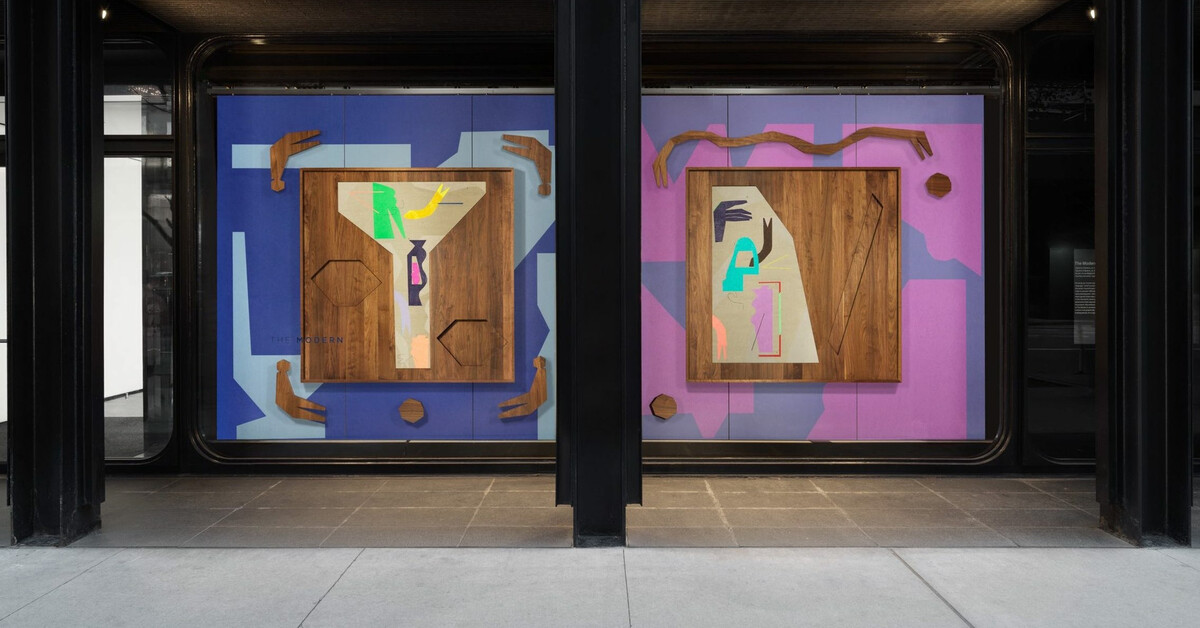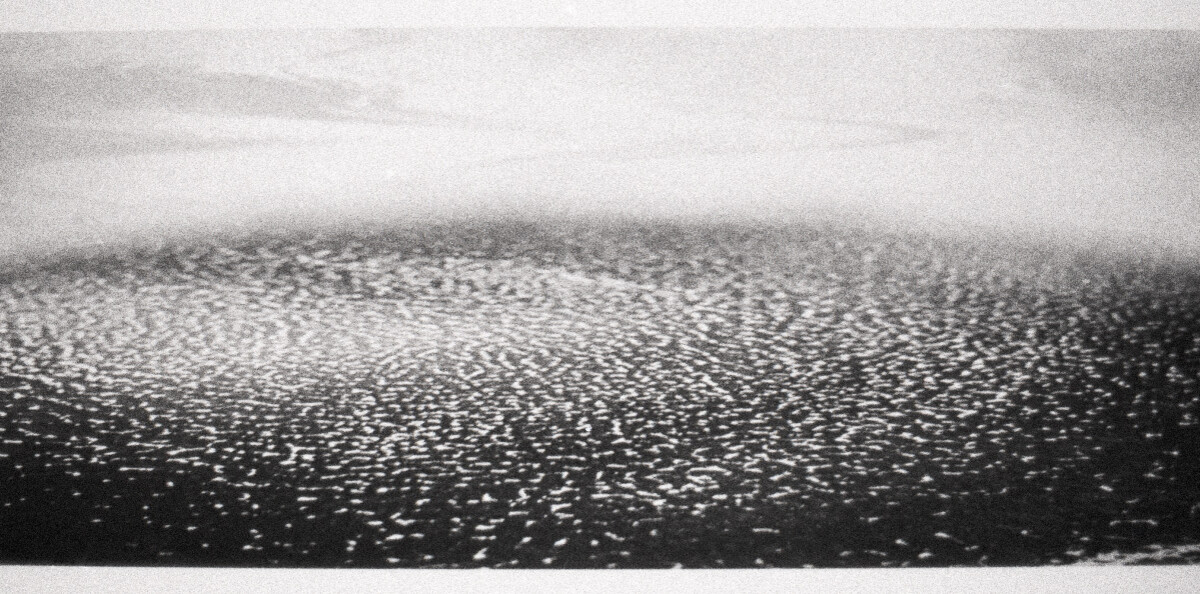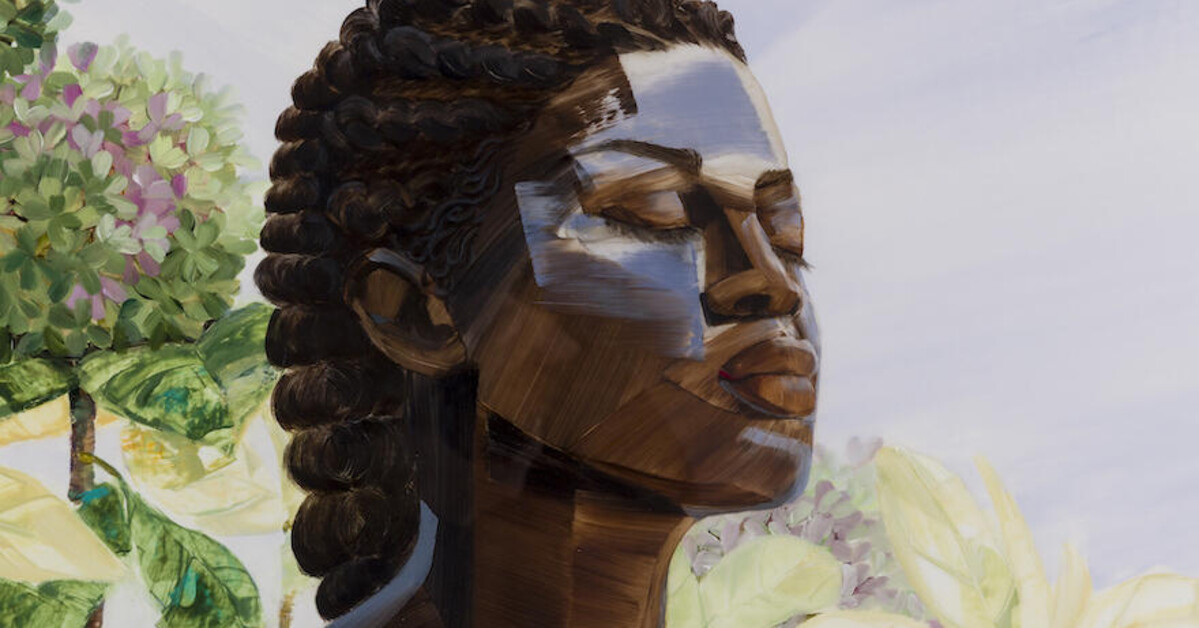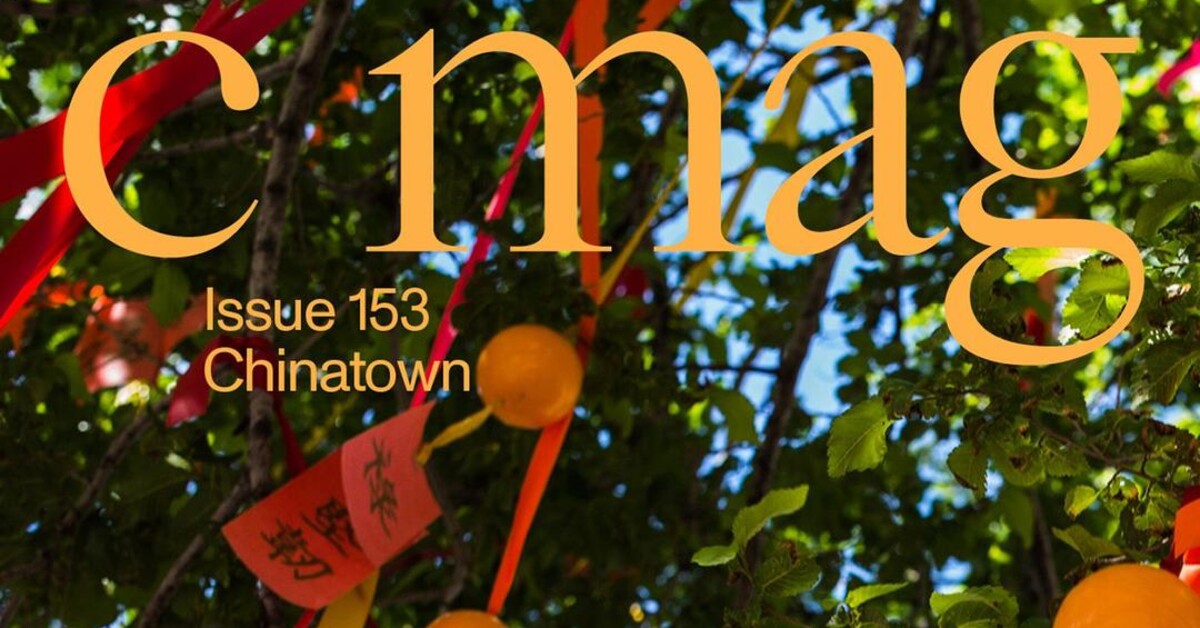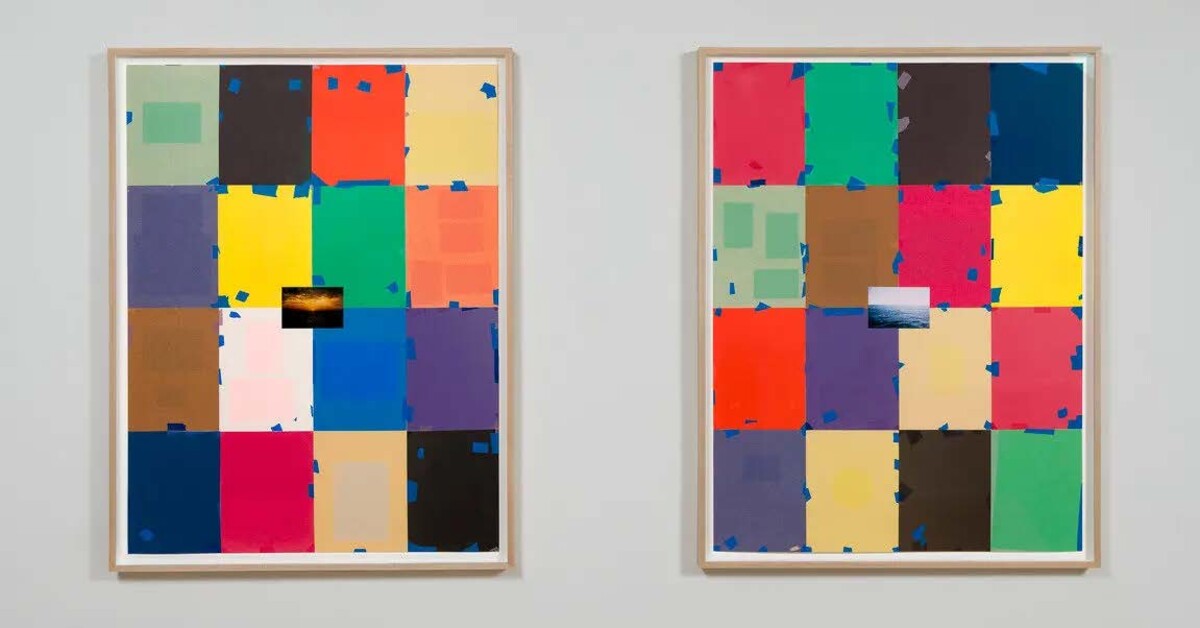Hans Kaiser in artistic dialogue with Liat Yossifor
Soest / Feb 8, 2024 / by Bettina Boronowsky
It is not surprising that Liat Yossifor immediately agreed when curator Ludwig Seyfarth suggested that she come into contact with the work of Hans Kaiser. The parallels in conception, choice of motifs and working method between the artists -rin from Los Angeles and the artist from Soest are astonishing and unmistakable. Starting on Sunday, Liat Yossifor will continue the “Hans Kaiser in Dialogue” series, which began in 2019 with Birgit Hölmer.
Without ever having heard of Hans Kaiser, the native Israeli obviously had an artistic closeness to the Soest artist years ago. The parallels became stronger the more they
occupied himself with his work. She looked at photos, the museum director Dr. Annette Werntze sent it to her and later looked around the Soest Museum.
Gestural played a major role in Hans Kaiser’s work; in the long term it led the artist from figurative works to abstraction. Liat Yossifor also works gesturally, but on a larger scale and performatively. This becomes particularly clear in their oversized
nal work “Vase/Face” from 2022. The artist applied the oil paint thickly with her hands and literally rolled around in her picture. In this way she achieved one
almost sculptural appearance of the work. In contrast to this are deliberately painted figurative pictures, such as the small-format one of the soldier, which was created in 2010 in Liat Yossifor’s artistic engagement with the Second World War. Without ever having heard of Hans Kaiser, she met his opinion, which he had presented in the 1944 oil painting “The Insanity”. What both have in common is a dichotomy of what is depicted - perhaps a reference to the usual friend-enemy pattern in every military conflict.
The small exhibition shows 16 works by both artists. Oil paintings on canvas or paper by Liat Yossifor from the period between 2010 and 2022 can be seen, and early and clearly figurative works by Hans Kaiser such as the “Descent from the Cross”. There are also six sheets by the American woman in the display case. All come from the Soest art collection, the Kirchner Collection and from private Soest collections.
_____
Catalog planned
The exhibition opens on Sunday, September 10th at 11 a.m. in the Wilhelm Morgner Museum under the title “The Colors behind” and can be seen until November 26th.
The deputy mayor Christiane Mackensen, Klaus-Peter Kirchner, chairman of the Hans Kaiser Circle, and curator Ludwig Seyfarth will speak at the introduction on Sunday. A small catalog will be published during the runtime, which will also contain exhibition views.
Original German:
Verwunderlich ist es nicht, dass Liat Yossifor gleich zustimmte, als Kurator Ludwig Seyfarth ihr vor- schlug, in Kontakt mit dem Werk von Hans Kaiser zu tre- ten. Die Parallelen in Auffas- sung, Motivwahl und Arbeits- weise zwischen der Künstle- rin aus Los Angeles und dem Künstler aus Soest sind ver- blüffend und unübersehbar. Liat Yossifor setzt ab Sonntag die Reihe „Hans Kaiser im Dialog“ fort, die 2019 mit Bir- git Hölmer begonnen hatte.
Ohne je von Hans Kaiser ge- hört zu haben, hatte die ge- bürtigen Israelin offensicht- lich schon vor Jahren eine künstlerische Nähe zu dem Soester. Die Parallelen wurde umso stärker, je mehr sie sich mit seinem Werk be- schäftigte. Sie schaute Fotos an, die Museumsleiterin Dr. Annette Werntze ihr schickte und sah sich später auch im Soester Museum um.
Das Gestische spielte im Werk Hans Kaisers eine gro- ße Rolle, es führte den Künst- ler langfristig von den figürli- chen Arbeiten zur Abstrakti- on. Gestisch, aber in größe- rem Rahmen und performa- tiv, arbeitet auch Liat Yossi- for. Besonders deutlich wird das in ihrem überdimensio- nalen Werk „Vase/Face“ von 2022. Die Ölfarbe hat die Künstlerin dick mit den Hän- den aufgetragen, wälzte sich förmlich in ihrem Bild. Auf diese Weise gelang ihr eine nahezu skulpturale Anmu- tung der Arbeit. Dem gegen- über stehen gezielt gemalte figürliche Bilder, wie das kleinformatige des Soldaten,
das schon 2010 in Liat Yossi- fors künstlerischen Ausei- nandersetzung mit dem Zweiten Weltkrieg entstand.
Ohne je von Hans Kaiser ge- hört zu haben, traf sie dessen Auffassung, die er 1944 im Ölgemälde „Der Irrsinn“ dar- legt hatte. Beiden gemein ist eine Zweiteilung des Darge- stellten – vielleicht ein Hin- weis auf das übliche Freund- Feind-Schema jeder kriegeri- schen Auseinandersetzung Die kleine Ausstellung zeigt 16 Werke beider Künst- ler.
Von Liat Yossifor sind Öl- bilder auf Leinwand oder Pa- pier aus der Zeit zwischen 2010 und 2022 und von Hans Kaiser frühe und deutlich fi- gurative Werke wie die „Kreuzabnahme“ zu sehen. Hinzu kommen sechs Blätter der Wahl-Amerikanerin in der Vitrine. Alle stammen aus dem Soester Kunstbesitz, der Sammlung Kirchner und aus privaten Soester Sammlun- gen.
Without ever having heard of Hans Kaiser, the native Israeli obviously had an artistic closeness to the Soest artist years ago. The parallels became stronger the more they
occupied himself with his work. She looked at photos, the museum director Dr. Annette Werntze sent it to her and later looked around the Soest Museum.
Gestural played a major role in Hans Kaiser’s work; in the long term it led the artist from figurative works to abstraction. Liat Yossifor also works gesturally, but on a larger scale and performatively. This becomes particularly clear in their oversized
nal work “Vase/Face” from 2022. The artist applied the oil paint thickly with her hands and literally rolled around in her picture. In this way she achieved one
almost sculptural appearance of the work. In contrast to this are deliberately painted figurative pictures, such as the small-format one of the soldier, which was created in 2010 in Liat Yossifor’s artistic engagement with the Second World War. Without ever having heard of Hans Kaiser, she met his opinion, which he had presented in the 1944 oil painting “The Insanity”. What both have in common is a dichotomy of what is depicted - perhaps a reference to the usual friend-enemy pattern in every military conflict.
The small exhibition shows 16 works by both artists. Oil paintings on canvas or paper by Liat Yossifor from the period between 2010 and 2022 can be seen, and early and clearly figurative works by Hans Kaiser such as the “Descent from the Cross”. There are also six sheets by the American woman in the display case. All come from the Soest art collection, the Kirchner Collection and from private Soest collections.
_____
Catalog planned
The exhibition opens on Sunday, September 10th at 11 a.m. in the Wilhelm Morgner Museum under the title “The Colors behind” and can be seen until November 26th.
The deputy mayor Christiane Mackensen, Klaus-Peter Kirchner, chairman of the Hans Kaiser Circle, and curator Ludwig Seyfarth will speak at the introduction on Sunday. A small catalog will be published during the runtime, which will also contain exhibition views.
Original German:
Verwunderlich ist es nicht, dass Liat Yossifor gleich zustimmte, als Kurator Ludwig Seyfarth ihr vor- schlug, in Kontakt mit dem Werk von Hans Kaiser zu tre- ten. Die Parallelen in Auffas- sung, Motivwahl und Arbeits- weise zwischen der Künstle- rin aus Los Angeles und dem Künstler aus Soest sind ver- blüffend und unübersehbar. Liat Yossifor setzt ab Sonntag die Reihe „Hans Kaiser im Dialog“ fort, die 2019 mit Bir- git Hölmer begonnen hatte.
Ohne je von Hans Kaiser ge- hört zu haben, hatte die ge- bürtigen Israelin offensicht- lich schon vor Jahren eine künstlerische Nähe zu dem Soester. Die Parallelen wurde umso stärker, je mehr sie sich mit seinem Werk be- schäftigte. Sie schaute Fotos an, die Museumsleiterin Dr. Annette Werntze ihr schickte und sah sich später auch im Soester Museum um.
Das Gestische spielte im Werk Hans Kaisers eine gro- ße Rolle, es führte den Künst- ler langfristig von den figürli- chen Arbeiten zur Abstrakti- on. Gestisch, aber in größe- rem Rahmen und performa- tiv, arbeitet auch Liat Yossi- for. Besonders deutlich wird das in ihrem überdimensio- nalen Werk „Vase/Face“ von 2022. Die Ölfarbe hat die Künstlerin dick mit den Hän- den aufgetragen, wälzte sich förmlich in ihrem Bild. Auf diese Weise gelang ihr eine nahezu skulpturale Anmu- tung der Arbeit. Dem gegen- über stehen gezielt gemalte figürliche Bilder, wie das kleinformatige des Soldaten,
das schon 2010 in Liat Yossi- fors künstlerischen Ausei- nandersetzung mit dem Zweiten Weltkrieg entstand.
Ohne je von Hans Kaiser ge- hört zu haben, traf sie dessen Auffassung, die er 1944 im Ölgemälde „Der Irrsinn“ dar- legt hatte. Beiden gemein ist eine Zweiteilung des Darge- stellten – vielleicht ein Hin- weis auf das übliche Freund- Feind-Schema jeder kriegeri- schen Auseinandersetzung Die kleine Ausstellung zeigt 16 Werke beider Künst- ler.
Von Liat Yossifor sind Öl- bilder auf Leinwand oder Pa- pier aus der Zeit zwischen 2010 und 2022 und von Hans Kaiser frühe und deutlich fi- gurative Werke wie die „Kreuzabnahme“ zu sehen. Hinzu kommen sechs Blätter der Wahl-Amerikanerin in der Vitrine. Alle stammen aus dem Soester Kunstbesitz, der Sammlung Kirchner und aus privaten Soester Sammlun- gen.

